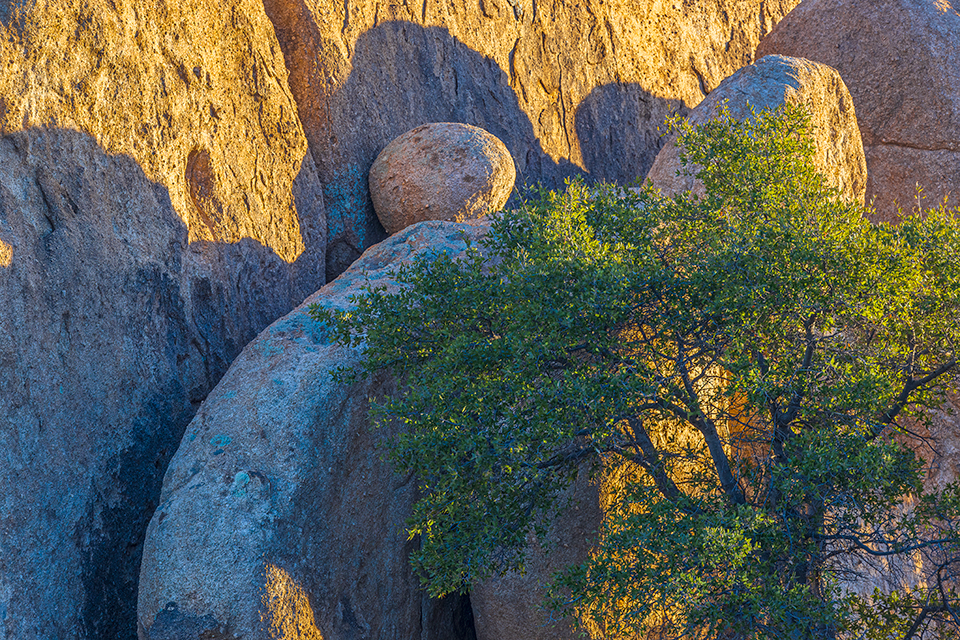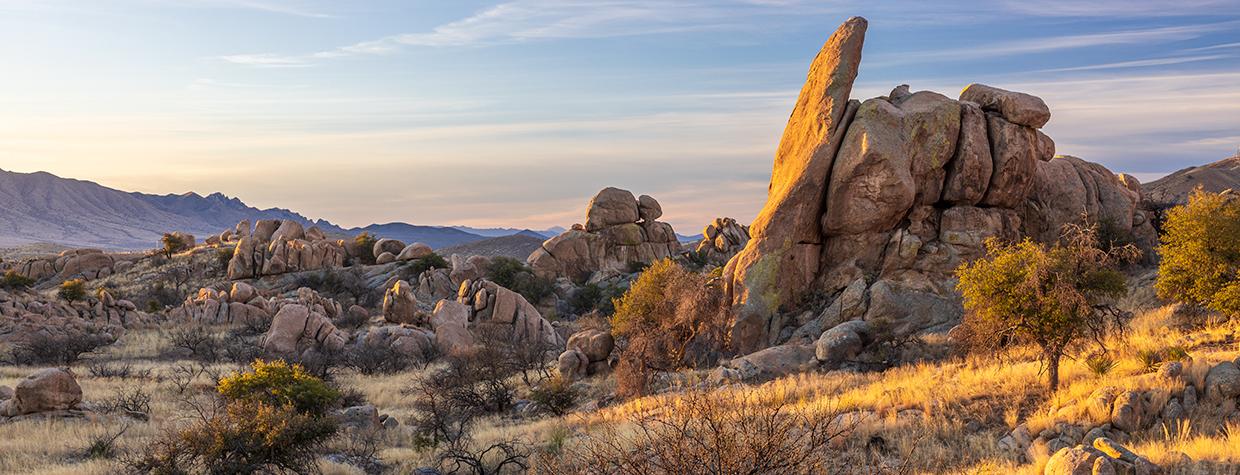Zipping past Texas Canyon, an hour southeast of Tucson, it’s impossible not to notice the boulders — giant, eye-catching piles of granite, like something out of The Flintstones. But other than providing scenery along Interstate 10 — particularly at a rest area just down the highway from the kitschy attraction known as The Thing — the area has long been off-limits to curious travelers who wanted to stretch their legs and get a closer look.
There are several private landowners in Texas Canyon, including Triangle T Guest Ranch, which has some trails for its guests. But none had opened its trails to the public until this past October, when the portion of the area owned and managed by the Amerind Foundation had its ribbon-cutting. After a multi-year campaign that raised $250,000, the Texas Canyon Nature Preserve — on land previously closed to the public for 85 years, and where the organization’s founding family raised quarter horses until 1968 — is open to all.
“The idea had been percolating with the Amerind Foundation board and management for years,” says Eric Kaldahl, the president, CEO and chief curator of the foundation. “The response from the surrounding community has been very enthusiastic. We welcomed more visitors last October than we’ve seen for the past 10 years.”
The preserve, located just off I-10 between Benson and Willcox, is part of a 1,900-acre campus that includes the Amerind Museum. More than 6 miles of trails wind past balanced rocks, fantastical shapes and rocky spires in open, sun-warmed high-desert grasslands studded with cactuses, wildflowers and trees. The trail is self-guided, although Kaldahl hopes to offer guided sunrise and sunset hikes in the next year. Visitors can pay a $12 admission fee for just the trails or $20 to visit both the trails and the museum.
Trail designer Sirena Rana knows the landscape can look intimidating, but she purposely designed the trails to be “perfect little morsels.” Rana didn’t grow up hiking, so she aimed to make the trails a comfortable experience for all ages and abilities. There are no steep elevation gains, and dirt, rather than gravel, makes for more stability. And Rana recalls walking for miles and miles over several months to understand the land and ensure the trails were constructed to shed water, limit erosion and provide firebreaks.

“Texas Canyon is one of the most unique landscapes in the Southwest, formed by millions of years of wind and rain weathering the granite,” she says, likening it to Joshua Tree National Park and the Wilderness of Rock on Mount Lemmon. “It’s very unusual that it’s right off a major interstate and just an hour from a major metropolitan area,” she adds. “This is one of the greatest outdoor sculpture gardens in the world designed by Mother Nature. I’m so pleased with how it turned out.”
Indeed, a wander through the preserve shows how tranquil it is, despite its proximity to the interstate. It’s a haven for wildlife, too: Depending on the time of year and time of day, you might spot white-tailed or mule deer, white-nosed coatis, or javelinas, along with a variety of bird species. That’s partly because the property was protected from hunting even when it was a working ranch. “I don’t know how the deer know this, but they do,” Kaldahl says. “In the winter, large family herds are often seen lounging in front of the museum.”
The Amerind has expanded on that heritage, working closely with the Arizona Game and Fish Department to introduce two native species, the Gila topminnow and the desert pupfish, to a pond that remains full year-round. Another species, the Chiricahua leopard frog, will be reintroduced this spring.
“Our pond holds temperatures steadily throughout the year, so it’s a safe harbor for these species,” Kaldahl says. “It’s important that we protect and revive them in this natural habitat, and that the public can see them.”
Elsewhere along the trail, signage reflects the Amerind Museum’s mission of fostering knowledge and understanding of Indigenous peoples. Acknowledging that these are ancestral lands, the signs feature O’odham, English and Spanish text, in that order — and Kaldahl hopes to add Apache, too.
Additionally, Indigenous people have collected basket-weaving materials from these lands for generations, and they remain free to access the grounds.
With Texas Canyon now within reach for everyone, Kaldahl hopes that when visitors experience the natural wonder, they’ll also make time to check out the museum. “Amerind is a hidden treasure,” he says. “We hope a new crop of people will take advantage of what we have to share.”

